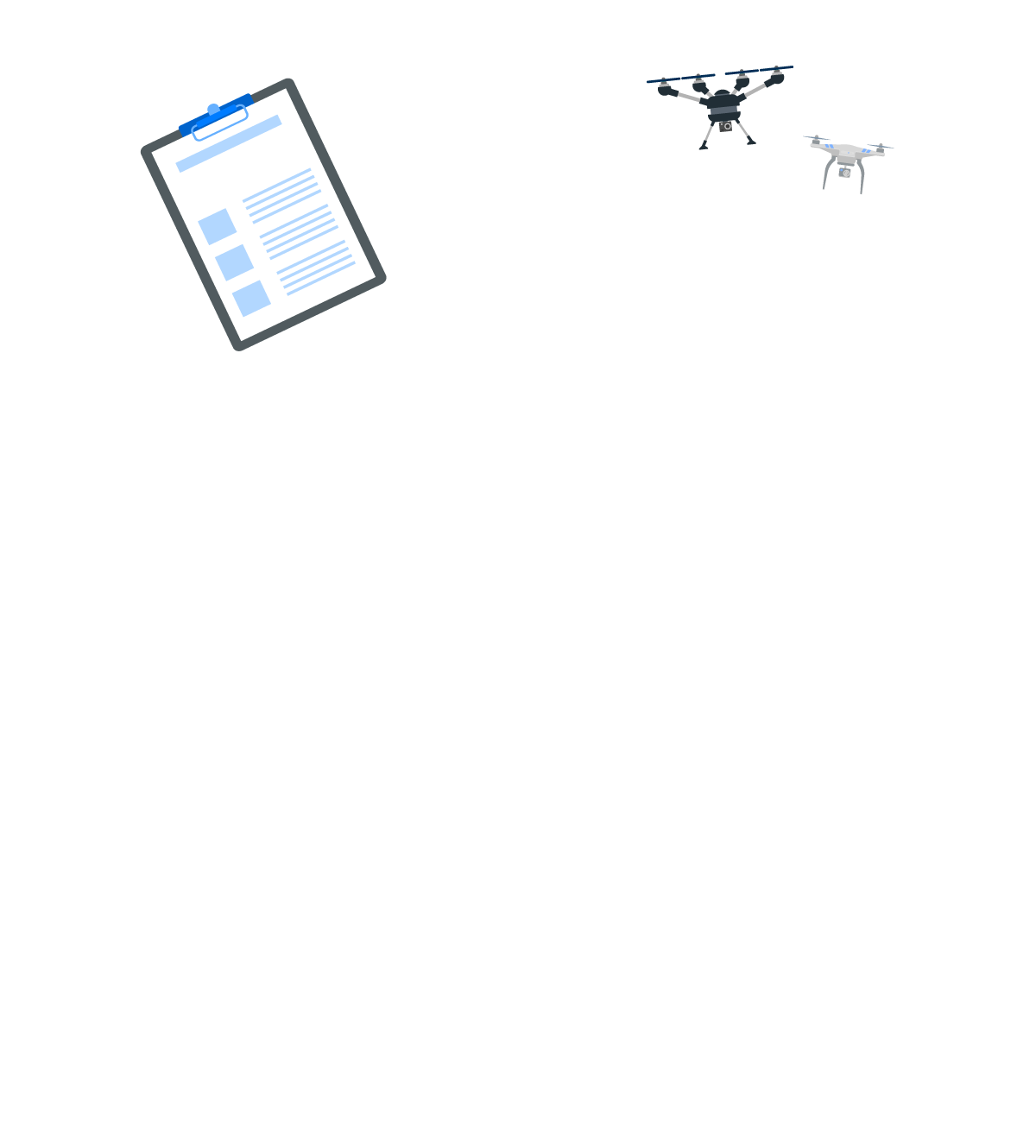
Step 1 | Lesson 1.2
Drone systems
What are drones? From multi-rotors to fixed-wing, drones come in many shapes and sizes. In this lesson you’ll learn how drones are made, what their vital components are, and the engineering that makes it all possible.
With emphasis on multi-rotors, you’ll get a good understanding of the vital systems and technologies employed. For additional perspective, delve into the history of drones and discover how this technological marvel evolved.
Every Flight to the Future lesson has seven segments that take you through a Mind Expanding Journey.
– Introduction
– Presentation
– Concept
– In-depth
– Recap
– Required reading
– Assessment
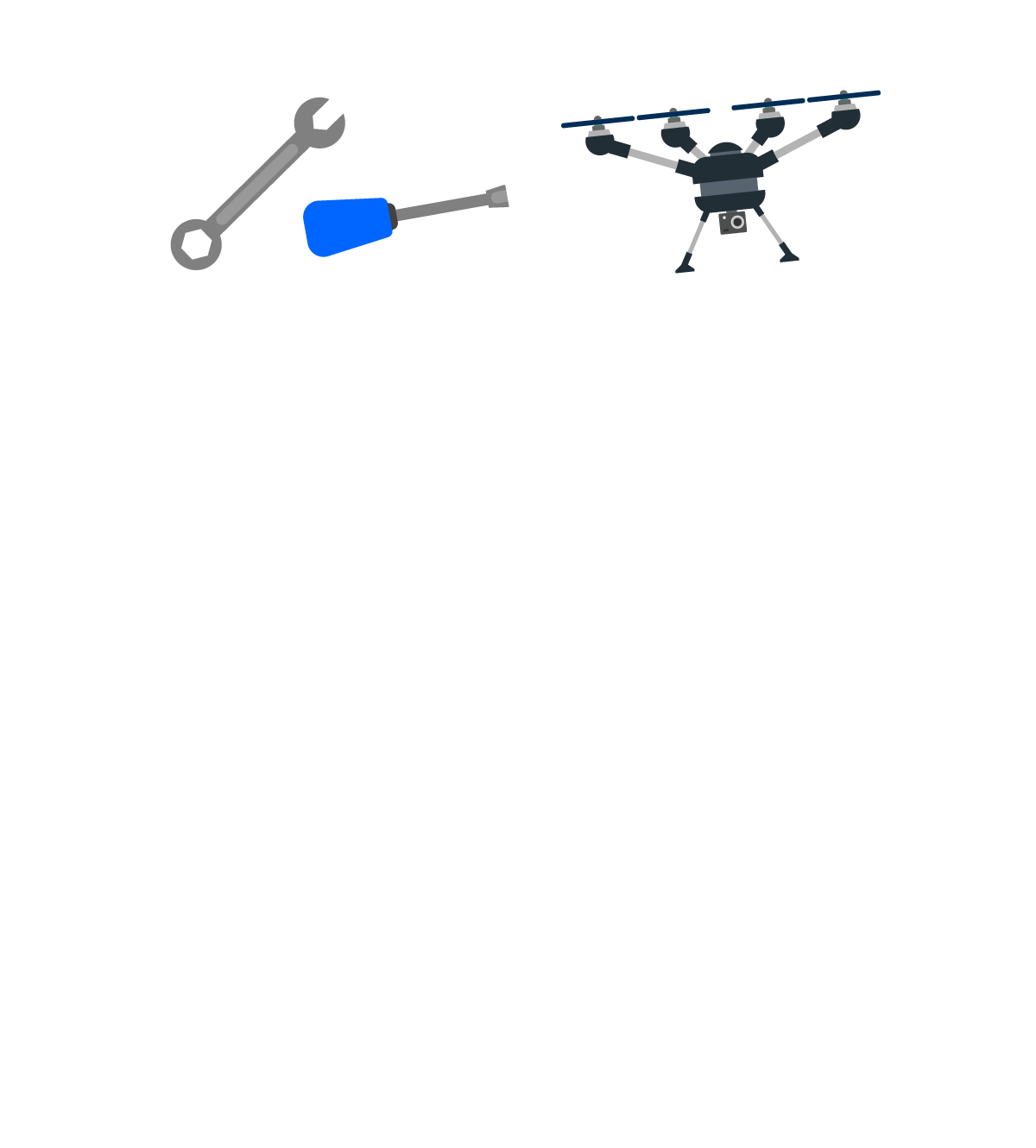


1.2.1. Introduction
Drones, UAVs, UAS
Drones in general describe machines that have some level of independence and can operate without human intervention or assistance for periods of time. To get a deeper understanding of drones and drone systems, we have to start by defining them. Although unmanned aerial vehicles or UAVs have become synonymous with the word drones, a large variety of machines can fall under this category.
As a future unmanned aerial services or UAS provider, you should have a good grasp of the concepts and technologies that converge in engineering and operating drones.
A drone system will consist of an Air Segment and Ground Segment. The Air Segment includes everything that flies to perform a mission. Namely the UAV and a payload. The Ground Segment includes the technology that is fixed to the ground and manages the UAV from mission planning to completion including post mission reporting. Drone engineering is focused on the air segment of the system.
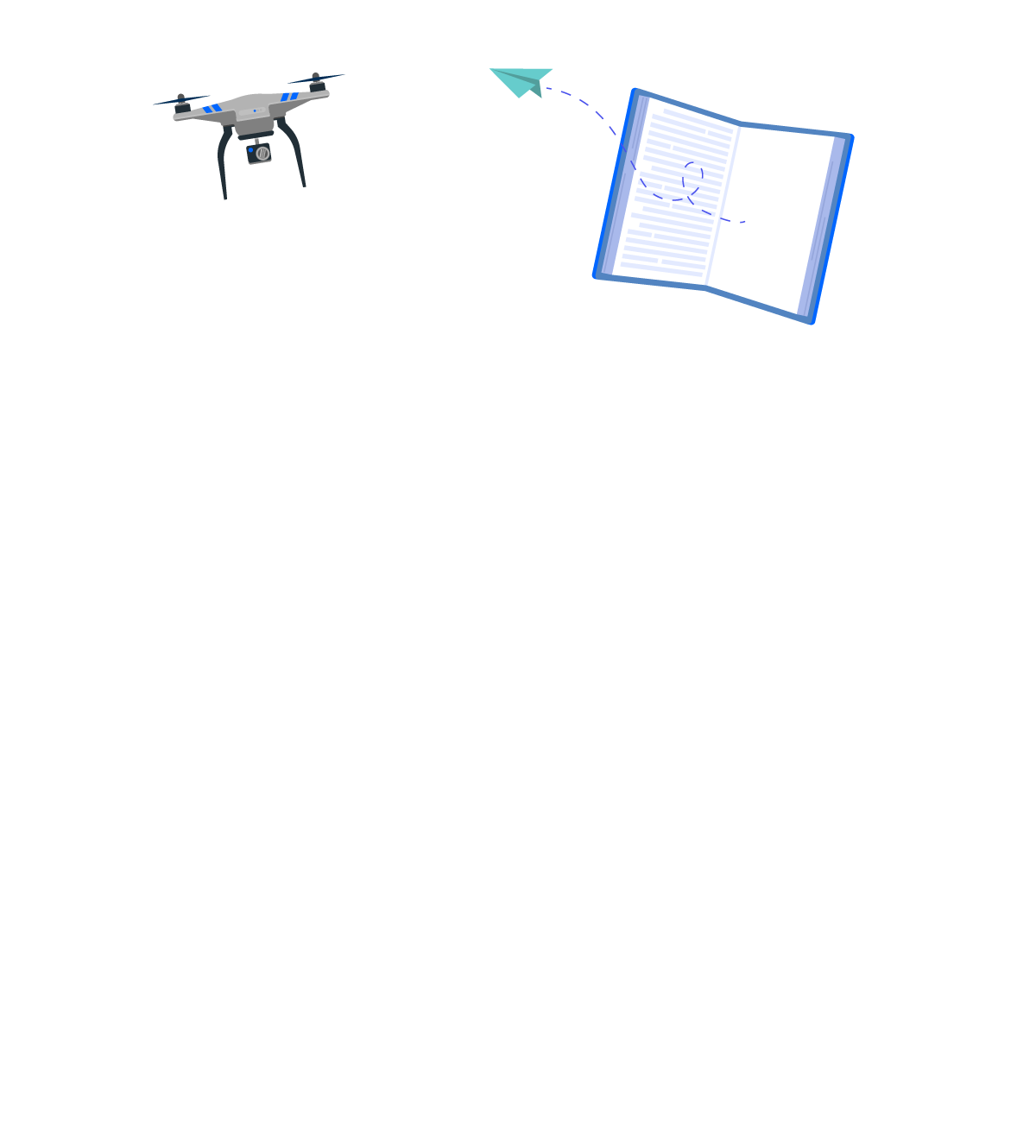


1.2.2 Presentation
What are drones?
Drones in general describe a large class of machines that have some level of independence and can operate without human intervention or assistance for periods of time.
From a historical perspective, drones were pioneered for warfare and reconnaissance throughout the 20th. Century. These developments ushered in the age of commercial drones at the start of the 21st.
The level of independence or shall we say, the degree of autonomy that drones are capable of, is changing rapidly due to the convergence of several technologies.
These include wireless communications, cloud connectivity with edge computing, artificial intelligence and of course, intrinsic flight capability.
Watch the teaser



1.2.3 Concept
Drone engineering
In this segment, you’ll gain a general understanding of drones engineering. Learn about airframe options, drone electronics and mission specific features.
In particular, you’ll learn about fixed-wing and VTOL designs, along with the pros and cons for each. Emphasis will be on multi-rotor configurations.
From a broader perspective, drone systems consist of both an air and ground segment. Drone engineering is mostly concerned with the air segment and delves into how the vehicles are designed and engineered.
Mission considerations play a crucial role in determining engineering details. For example, long range drones would need to be equipped with both an LTE capable transceiver and satellite communications
Watch the teaser
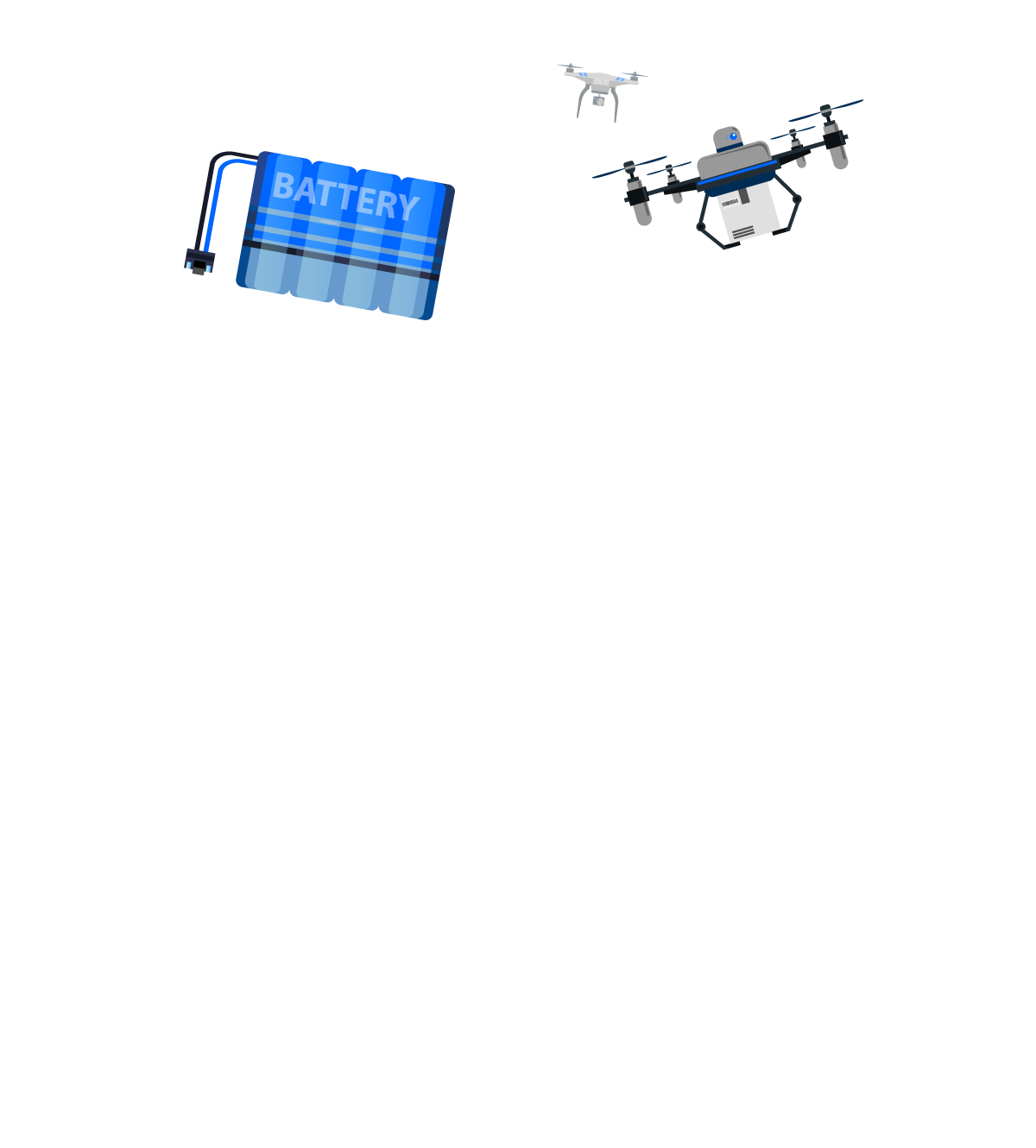


1.2.4 In-depth
A history of drones
The flying bomb: Kettering Bug
The rail-launched Kettering Aerial Torpedo “Bug,” was created by the Dayton-Wright Airplane Company in 1917. It was basically an unmanned aerial torpedo, guided by preset controls.
Once over its target area, the engine would be switched off and the wings released, causing the 180 lbs of explosives in the fuselage to plunge to earth and detonate.
A nuclear powered drone
After the downing of the manned U2 spy plane over the Soviet Union in 1960, research by the CIA led to the development concept of unmanned aerial vehicles (UAVs) as intelligence collection platforms.
Aquiline was envisioned as a long-range vehicle that could stealthily provide a window into denied areas such as the Soviet Union through photography and other capabilities.
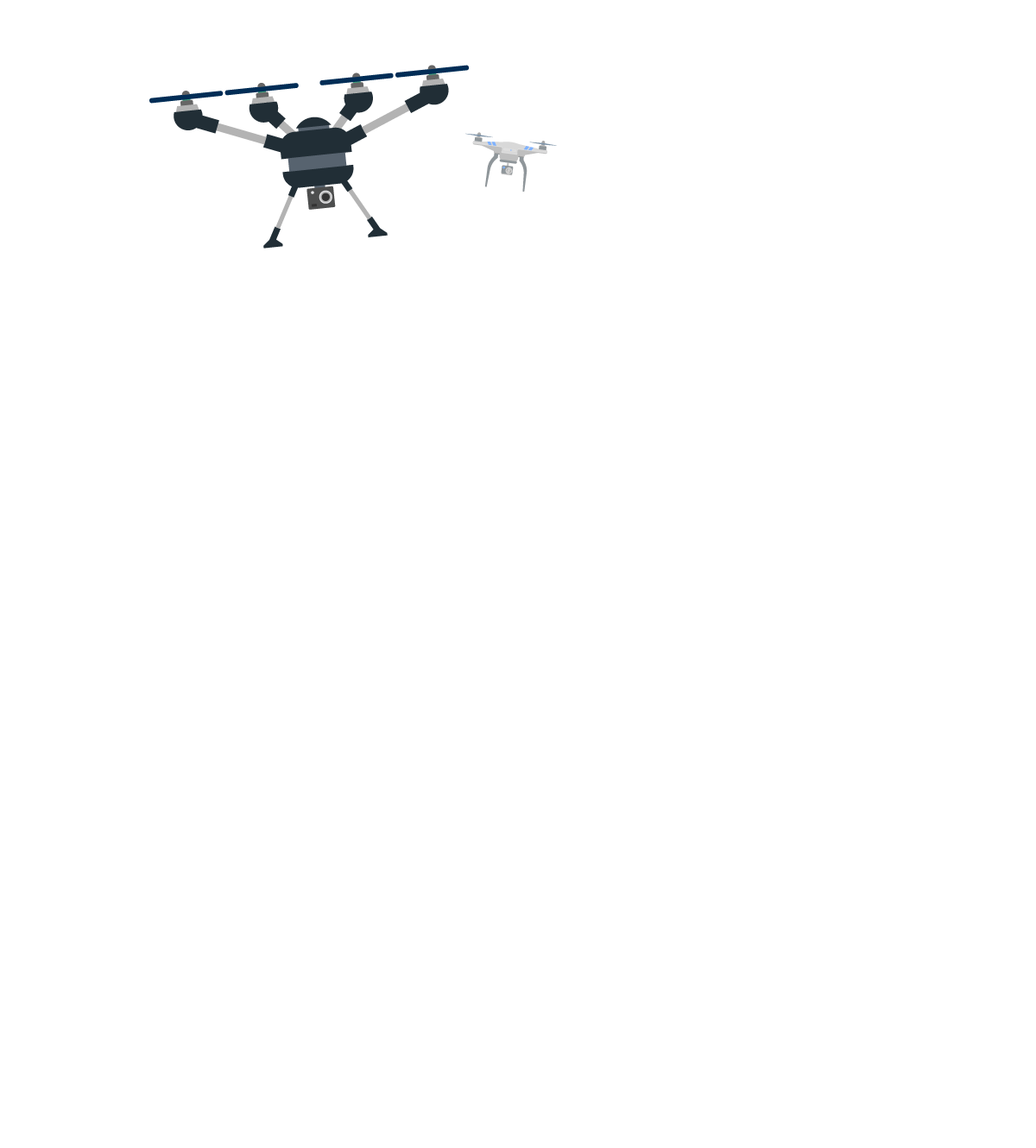


1.2.5 Recap
Lesson summary
Drones are machines with some degree of autonomy
A drone is any vehicle that can walk, run, crawl, roll, drive, swim, or fly with some autonomy. In a popular sense, it refers to an unmanned aerial vehicle or UAV.
The degree of autonomy can vary from remotely piloted vehicles to predetermined autonomous capabilities, to smart, real-time decision-making behavior.
Artificial intelligence is crucial for analyzing drone data
A combination of on-board and cloud-based processing is taking place in ‘smart’, connected drones. Machine learning is a basic form of artificial intelligence that is often utilized.
Deep learning, which is based on artificial neural networks, is now appearing in the industry. Deep learning AIs can provide better insights as data becomes more complex



1.2.6 Required reading
Lesson library
Required
– The WIRED Guide to Drones
– Uber unveils six-rotor food delivery drones ahead of 2020 test run
– Insights Before Flights: How Community Perceptions Can Make or Break Medical Drone Deliveries
– 24 Underwater Drones – The Boom in Robotics Beneath the Waves
– Deploying drones to prepare for climate change
– Design Essentials: For UAVs and Drones, Batteries are Included
For advanced readers
– Classifications, applications, and design challenges of drones: A review
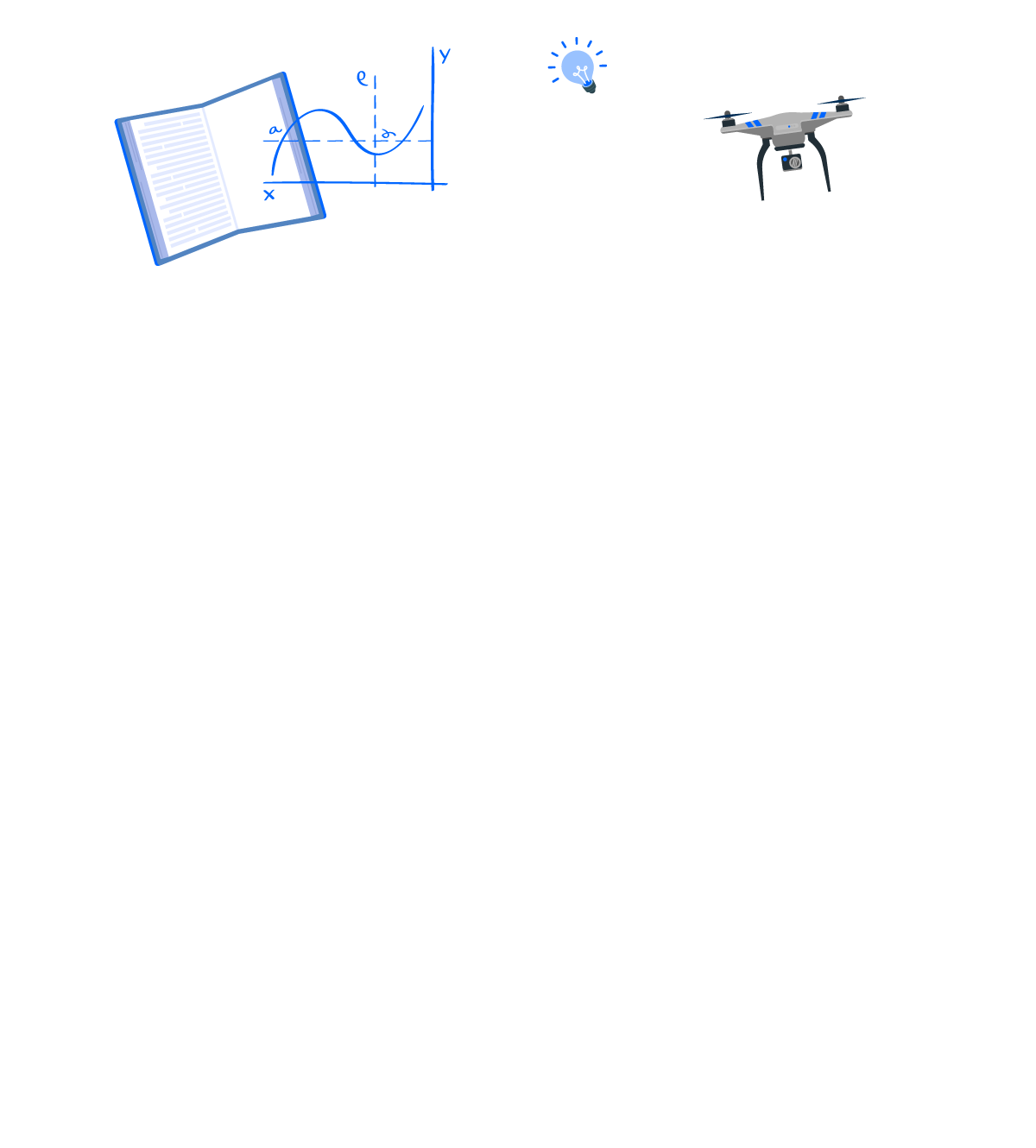


1.2.7 Assessment
Lesson quiz
The ground segment of a drone system consists of
– The remote-control interface that the drone pilot uses to fly the vehicle.
– The landing strip or area that is designated for drone takeoffs and landings.
– Technology that is fixed to the ground and manages the unmanned aerial vehicle.
– Maintaining a hardcopy and/or electronic logbook of all periodic inspections, maintenance, preventative maintenance.
– Repairs, and alterations performed on the UAV / Drone.
Ten multiple choice questions. An 80% score is needed to advance to the next lesson.
